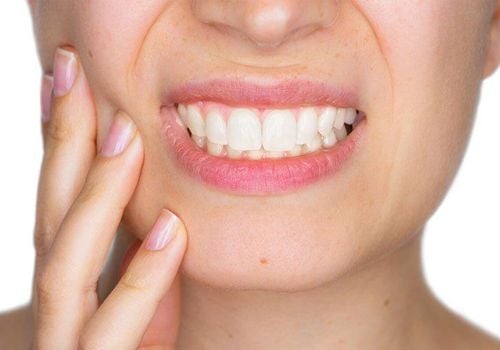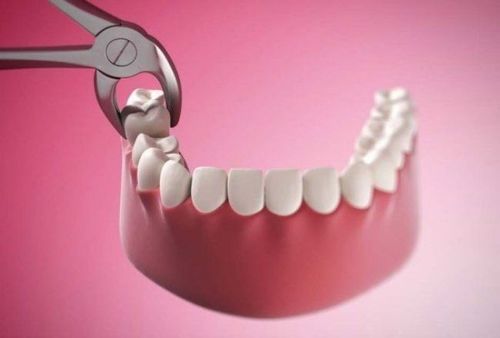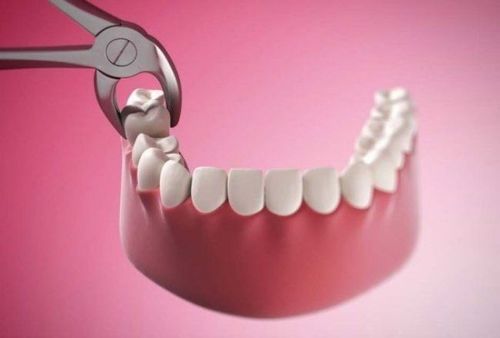Is it dangerous if a wisdom tooth grows sideways into the cheek?
Article written by Master, Doctor Lai Do Quyen, Department of Interspecialties (Eye - Ear, Nose Throat - Oral and Maxillofacial), Vinmec Times City International Hospital
A wisdom tooth growing sideways into the cheek is one of the cases of wisdom teeth growing improperly. Misaligned wisdom teeth often cause discomfort and can negatively impact oral health. In this article, you will learn why wisdom teeth frequently grow improperly, whether wisdom teeth growing into the cheek is dangerous, how to recognize it, and how to address misaligned wisdom teeth.
1. What are wisdom teeth?
Wisdom teeth, also known as the 8th teeth, are the third molars located at the very back of each dental arch. There are a total of four wisdom teeth: two on the upper jaw and two on the lower jaw. These teeth are the last to emerge in the dental arch.
Wisdom teeth typically begin to emerge between the ages of 18–26, when the jawbone has fully developed. Unlike other teeth that grow continuously, the emergence of wisdom teeth is intermittent, often slow, and prolonged over an extended period.
2. Why do wisdom teeth often grow improperly?
The causes of wisdom teeth growing into the cheek are similar to other cases of misaligned wisdom teeth. During the fetal stage, the formation of permanent tooth buds occurs early in several stages. The bud for wisdom teeth forms later than other teeth due to the backward extension of the tooth bud band, called the dental lamina. As a child grows, the development of the wisdom tooth bud continues alongside the backward extension of the jawbone, pulling the wisdom tooth bud back and causing misalignment. As a result, the wisdom tooth may not be straight on the dental arch, leading to improper growth. Typically, wisdom teeth tend to grow forward, outward, or into the cheek. Additionally, since wisdom teeth emerge in adulthood, the jawbone is already fully developed, firm, and the other teeth are well-established on the dental arch. As wisdom teeth attempt to grow, they face obstacles such as the robust jawbone and limited space due to other teeth, forcing them to grow at an angle.
3. Is it dangerous for wisdom teeth to grow into the cheek?
Wisdom teeth growing improperly, especially into the cheek, is a relatively common phenomenon. This condition can cause:
- Toothache: A dull pain as if the teeth are being pushed, with discomfort in the cheek where the tooth is growing. The pain is most noticeable during the tooth's growth phase and may subside once growth stops. However, complications such as infection or cavities can exacerbate the pain significantly.
- Swollen gums around the misaligned wisdom tooth: The gum may be mildly red and swollen, alleviated by rinsing with salt water. The swollen gums may become large, turn red, and sometimes pus discharge from swollen gums.
- A gum flap is the part of the gum that covers the top surface of a wisdom tooth (the chewing surface) and does not fully recede due to the prolonged tooth eruption process or because the tooth is impacted and unable to fully emerge. Since the gum flap does not fit tightly against the tooth surface, food easily becomes trapped in the gap between the underside of the gum and the chewing surface of the tooth, leading to bad breath and gum infection.
- Tooth Decay in Wisdom Teeth: Wisdom teeth that grow in incorrect positions are more prone to trapping food between the gaps and on the tooth surface, leading to tooth decay. The presence of a gum flap covering the tooth surface further increases the risk of decay. Tooth decay may progress silently without causing noticeable pain, only becoming evident when the cavity extends into the pulp and causes significant discomfort. At this stage, the cavity may be extensive, leading to the loss of a substantial portion of the tooth structure, which complicates the extraction of a misaligned wisdom tooth.
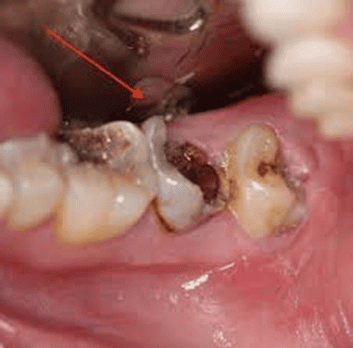
- Misalignment causes the tooth to rub against the cheek, creating a sensation of irritation and discomfort during speaking or chewing. This friction can lead to bleeding and ulcers in the cheek's mucosal lining, impairing chewing functions. Swelling and pain in the cheek further detract from aesthetic appearance. In some cases, these ulcers develop into chronic infections that are slow to heal and spread, complicating treatment.
- Whole-Arch Misalignment: When wisdom teeth erupt without adequate space, they exert pressure on the adjacent teeth, especially the tooth directly in front (usually the second molar). This pressure can lead to misalignment of the entire dental arch. Front teeth, which are smaller and have single roots, are particularly susceptible to displacement, leading to noticeable crowding in the front section of the jaw.
- Damage to adjacent teeth (tooth number 7): Misaligned wisdom teeth frequently trap food debris in the gaps between teeth, and their difficult-to-reach position complicates oral hygiene, increasing the risk of decay in the second molar (tooth number 7). Cavities in these areas are often hidden and go unnoticed until pain prompts a dental visit and imaging reveals the decay. At this stage, treatment of the second molar is more complex, and in some cases, the tooth cannot be saved.
- Untreated localized infections around a misaligned wisdom tooth, or ulcers caused by contact with the cheek, can spread to surrounding areas. If left unaddressed, these infections may become severe, posing significant health risks and even life-threatening complications.
4. How to recognize wisdom teeth growing into the cheek
When your wisdom teeth begin to grow, you may notice:
- Compression Signs: A sensation of pressure or dull pain as the wisdom tooth pushes against other teeth, potentially leading to crowding of the front teeth.
- Signs of local infection: Pain or redness in the gums above the wisdom tooth, swelling, pus discharge, and bad breath caused by trapped food particles. The cheek where the wisdom tooth grows is swollen, painful, and has cuts or scratches due to the teeth in the upper jaw biting into it. Sometimes you cannot open your mouth wide because of the pain.
- Signs of widespread infection: bleeding, swelling, swollen face, pain, bad breath, pus discharge from swollen gums, fever, swollen lymph nodes under the jaw...
- The tooth or part of it becomes visible above the gumline, growing toward the cheek.
- Decay in the wisdom tooth or tooth number 7.
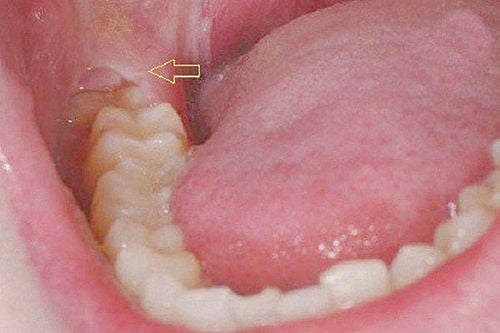
5. How to treat misaligned wisdom teeth?
Misaligned wisdom teeth and wisdom teeth growing toward the cheek can cause many serious complications. Therefore, extracting wisdom teeth is essential, as it is a quick and definitive treatment to eliminate all potential risks and unwanted complications caused by wisdom teeth misaligned toward the cheek.
However, before deciding to extract wisdom teeth, the dentist will need to carefully assess and discuss with you whether the procedure is safe for you and determine the most appropriate time for the extraction of misaligned wisdom teeth growing toward the cheek.
Misaligned wisdom teeth and those growing toward the cheek are common occurrences. When wisdom teeth erupt, they often cause noticeable discomfort and may lead to unpredictable, dangerous complications. For this reason, if you notice misaligned wisdom teeth or wisdom teeth growing toward the cheek, you should consult a dentist to receive appropriate recommendations and avoid severe complications.
See also: Guide to diagnosing misaligned wisdom teeth
To arrange an appointment, please call HOTLINE or make your reservation directly HERE. You may also download the MyVinmec app to schedule appointments faster and manage your reservations more conveniently.






